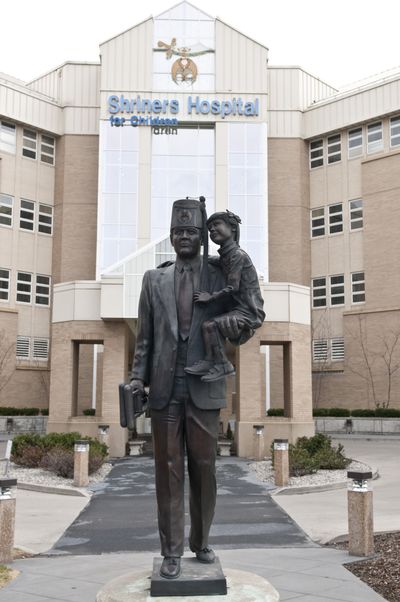Deficits may force Shriners to close facility

Parents, former patients and the medical community reeled from Monday’s news that Shriners International may close its children’s hospital in Spokane.
The hospital is regarded by many as a city jewel – a group of specialists who have healed and helped children for 85 years.
“Closing Shriners would be devastating,” said Atania Gilmore. “As a mom, I just completely trust them to help us make the right decisions for our 9-year-old son.”
Grant Gilmore was born with scoliosis and a sunken chest, a condition called pectus excavatum.
The Shriners staff just fit him with new braces. Eventually he will need surgery.
Atania Gilmore has never received a bill.
“Just incredible,” she said. “The care they have provided for my son is invaluable. They are sensitive to his needs.”
The recession has hit the Shriners Hospitals for Children. The charity’s endowment has lost $3 billion, and its 22 hospitals across the country are losing a combined million dollars a day, said Ralph Semb, chairman of the board.
The Shriners board is trying to recover from losses and worsening budget deficits. One consideration is to close six of its hospitals – Spokane is on that list.
The Shriners organization has already voted against reopening its hospital in Galveston, Texas, which was damaged last year in Hurricane Ike.
Final decisions regarding closures will be made in July.
The Spokane hospital employs 172 people and each year treats about 8,500 children with orthopedic problems.
Peggy Mangiaracina, executive director of Sacred Heart Children’s Hospital, said the announcement was a surprise.
“This is a hospital with great outcomes,” she said of Shriners. “They play a specialized and important role for a huge region, and we hope to continue the close collaboration we have had.”
Telephone messages left at Shriners headquarters in Tampa, Fla., were not returned.
Children up to age 18 with orthopedic conditions, burns, spinal cord injuries, and cleft lips and palates are eligible for care.
There is no charge, regardless of financial need.
Shriners Hospital for Crippled Children opened as a unit at St. Luke’s Hospital on Summit Boulevard on Spokane’s North Side on Nov. 15, 1924.
The Spokane Chronicle story announcing it began: “Twenty happy children – crippled to be sure – but happy, are being cared for today in the Shrine Hospital for crippled children, in a wing at St. Luke’s Hospital. They have comfortable little beds, they are getting the best specialized treatment that money can buy, they are receiving the attention of kindly trained nurses and they are making friends with the Shriners and women of the Shrine auxiliary, who have made all this possible.”
On Nov. 3, 1930, after years of intense fundraising, the Shriners broke ground on a new hospital on the campus of St. Luke’s. It was a big community event. According to the Chronicle, the Shriners’ “imperial potentate” for North America “struck a spade in the ground” where the new “$50,000 Shrine Hospital for crippled children” will rise.
By the 1970s the Spokane hospital was outdated, and patient numbers lagged. So in the spring of 1980, the Shriners board voted to close the facility.
The decision, however, was quickly reversed. The hospital was awarded a reprieve and granted a new mission: research.
During the 1980s, Shriners renewed its commitment to Spokane and by 1988 had designed its new hospital across the street from Deaconess Medical Center, at 911 W. 5th Ave. The $20 million hospital, which opened in 1991, is now a place where physicians perform 650 surgeries each year. Last year, the Shriners dropped “crippled” from the name.
Lisa Samuels has high hopes for her son Matthew, a 12-year-old with Down syndrome who suffered a debilitating injury.
They have an appointment next week, and she hopes the Shriners specialists can help him overcome a painful spinal cord problem.
“He is in so much pain that he just cries all the time. This might be our last chance,” she said. “That’s why places like Shriners are so important.”